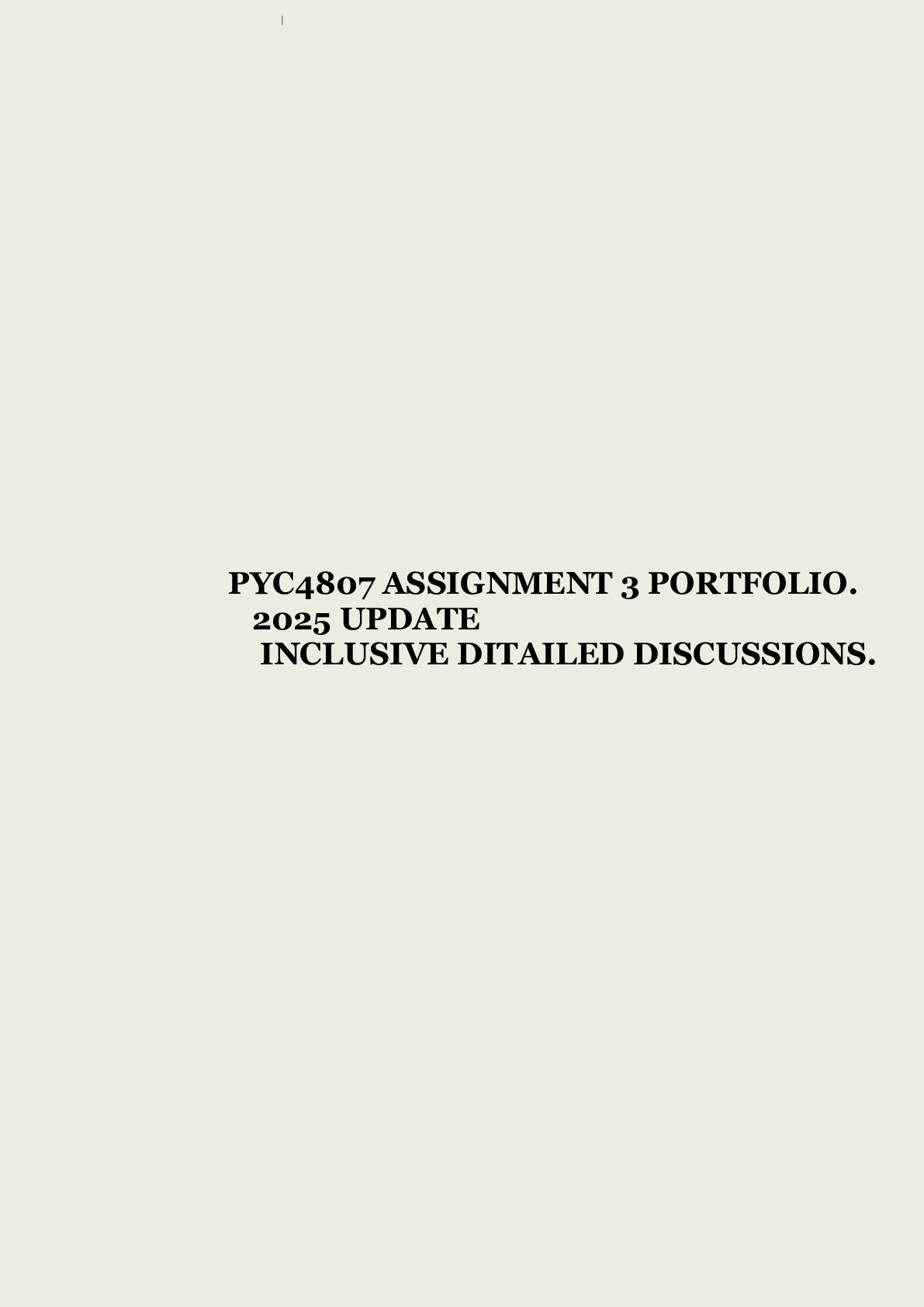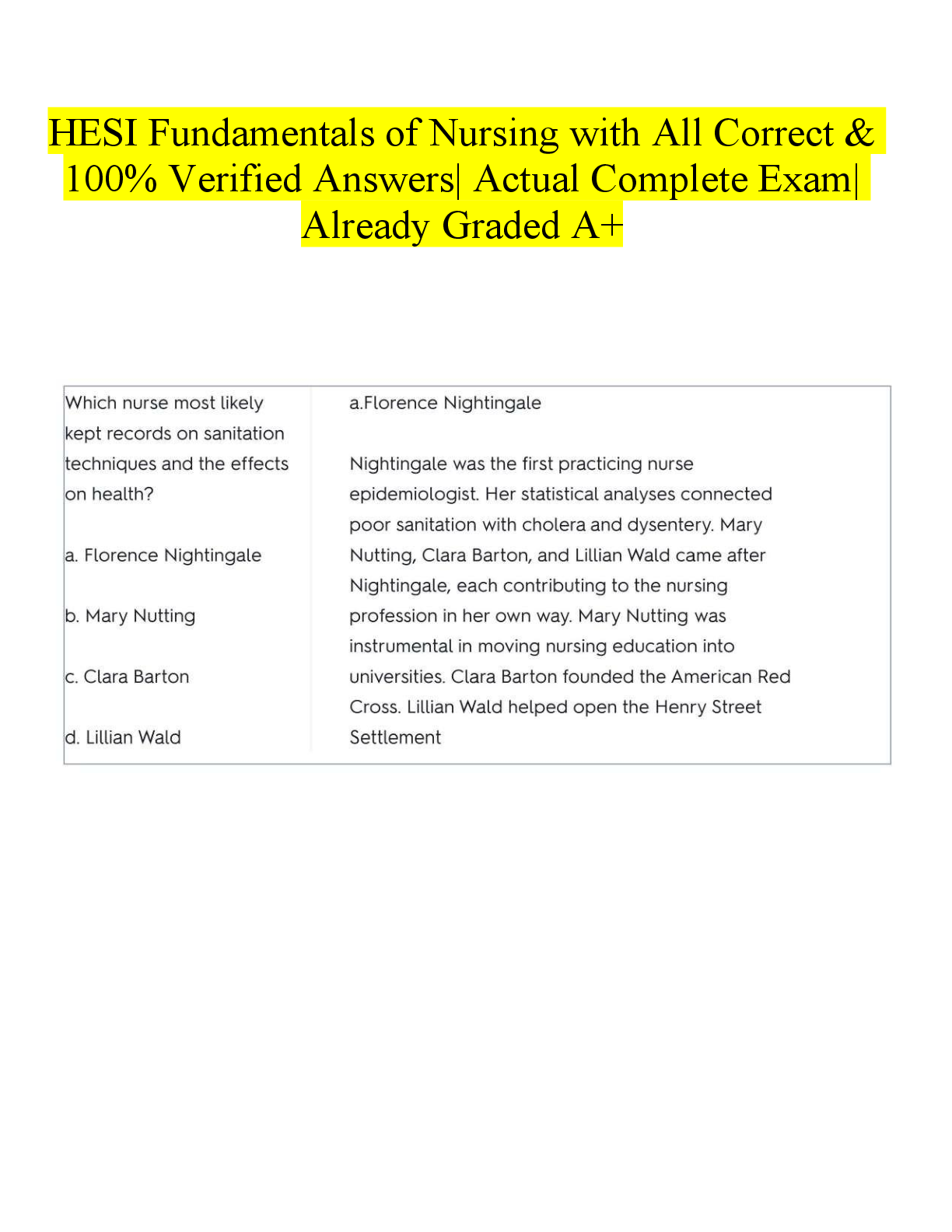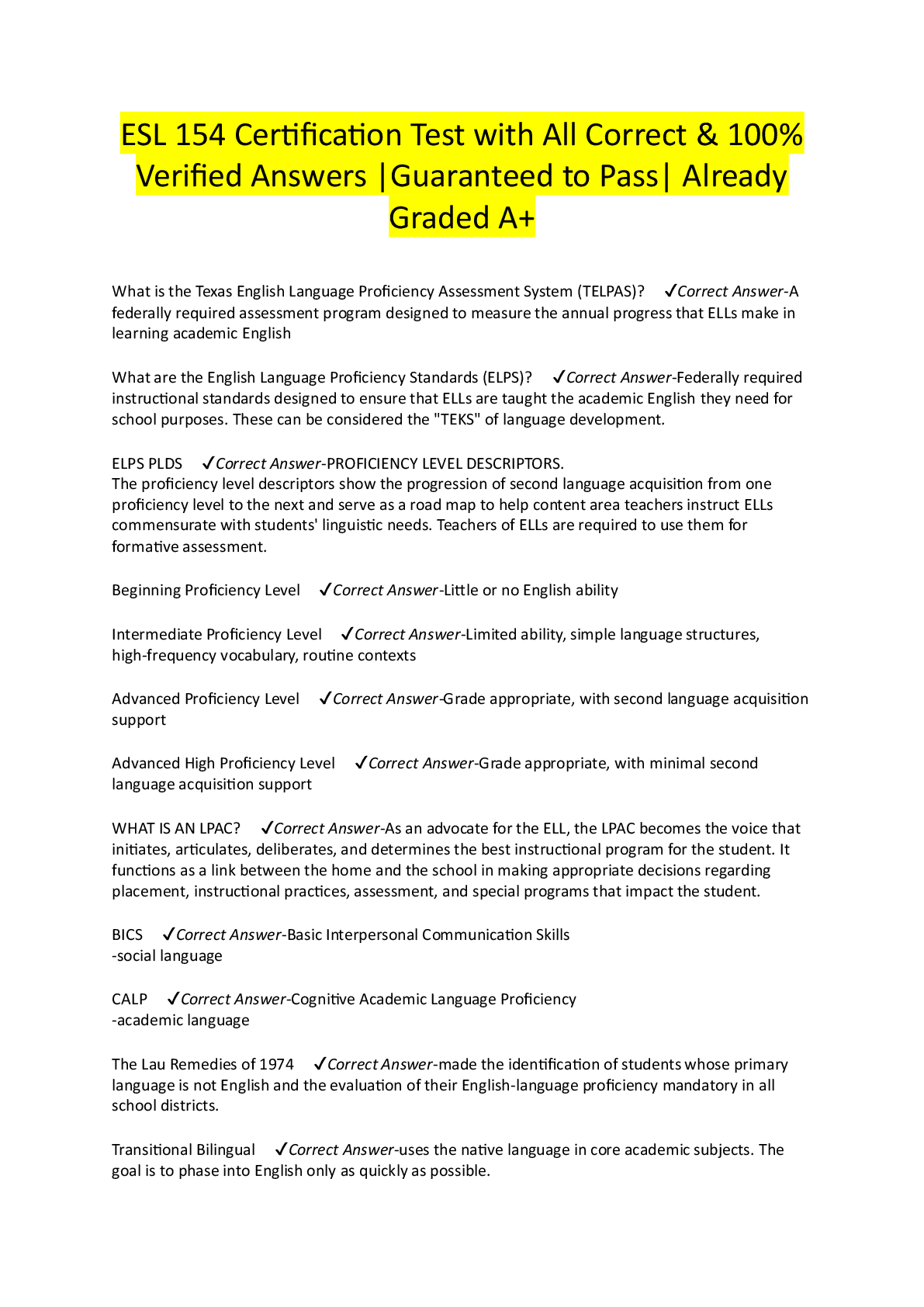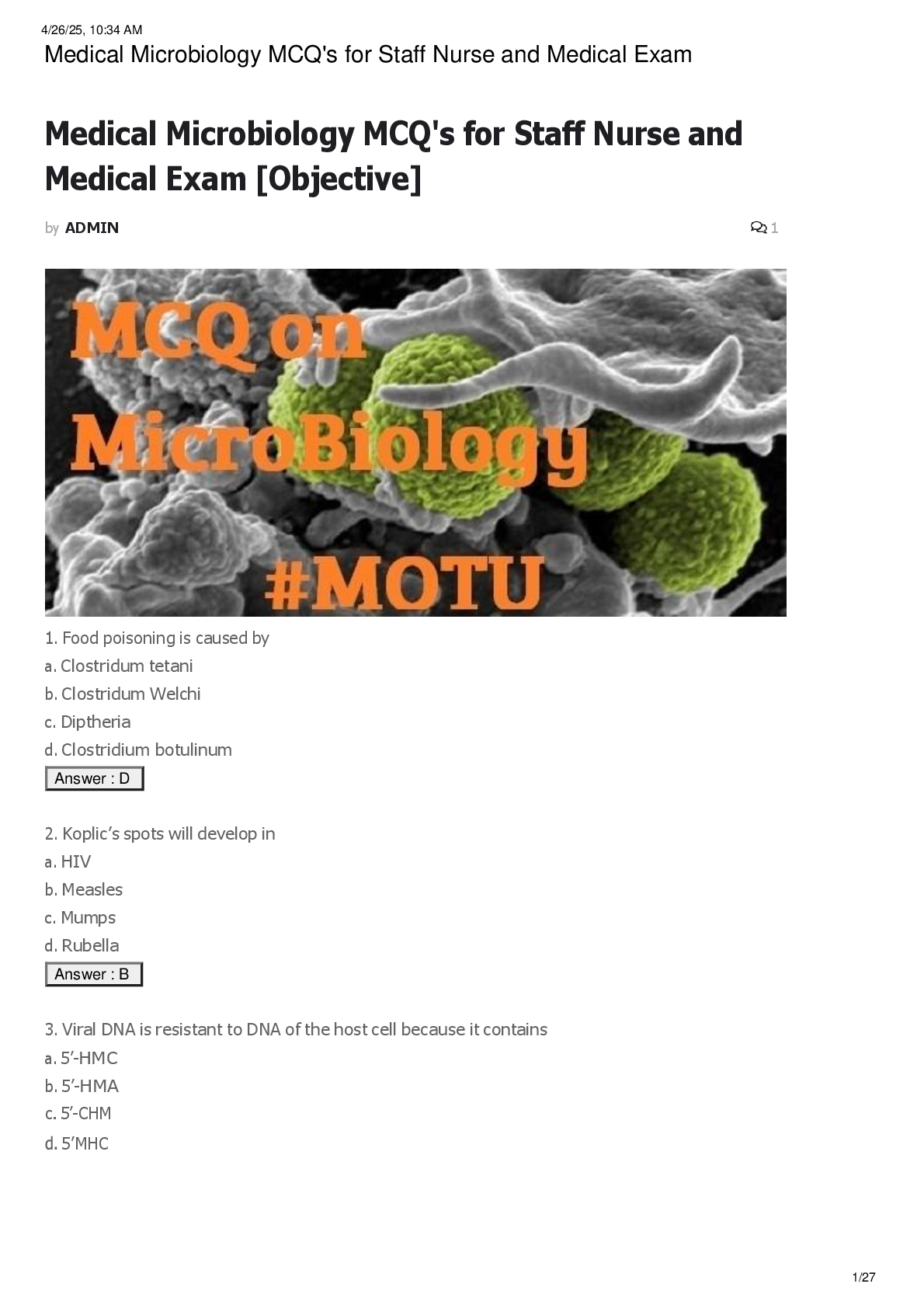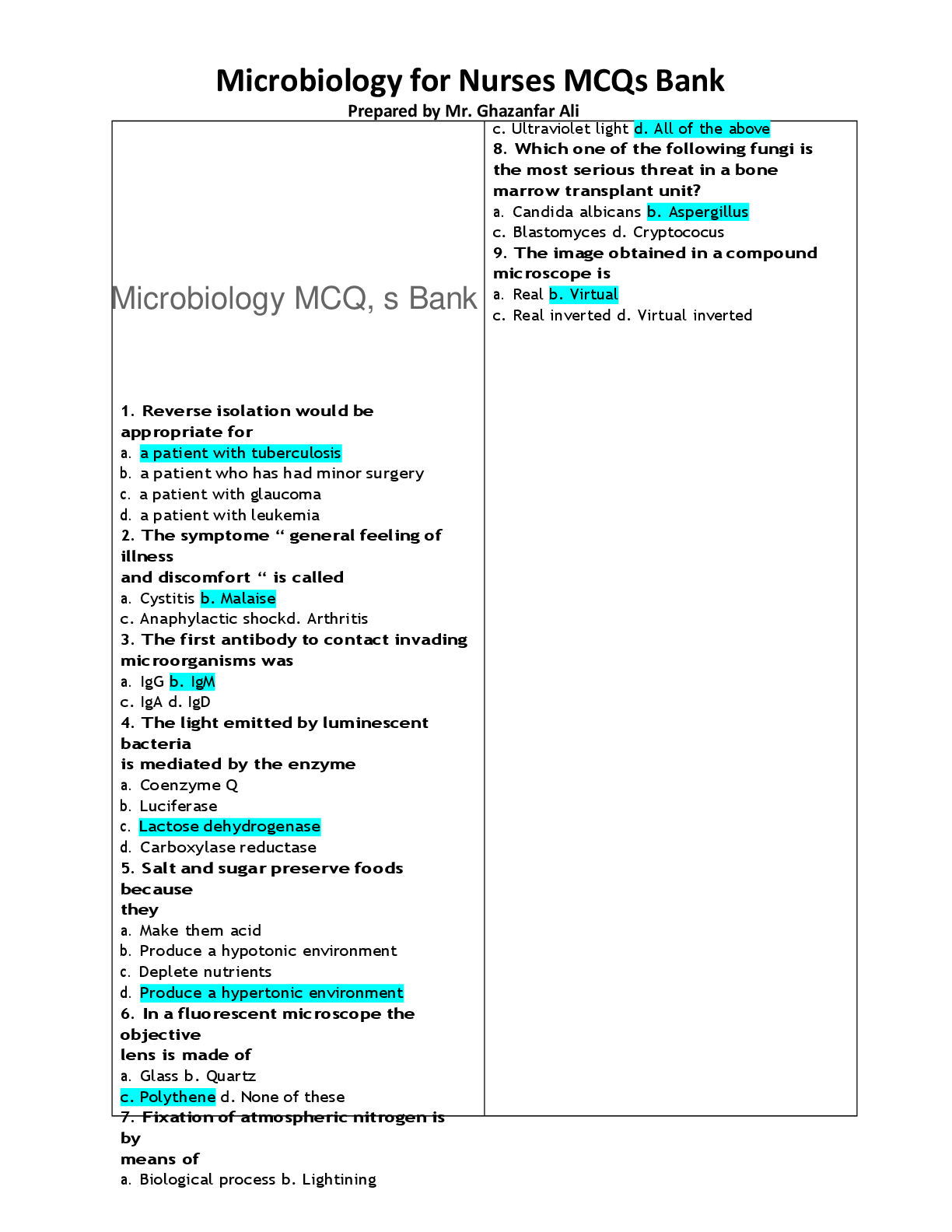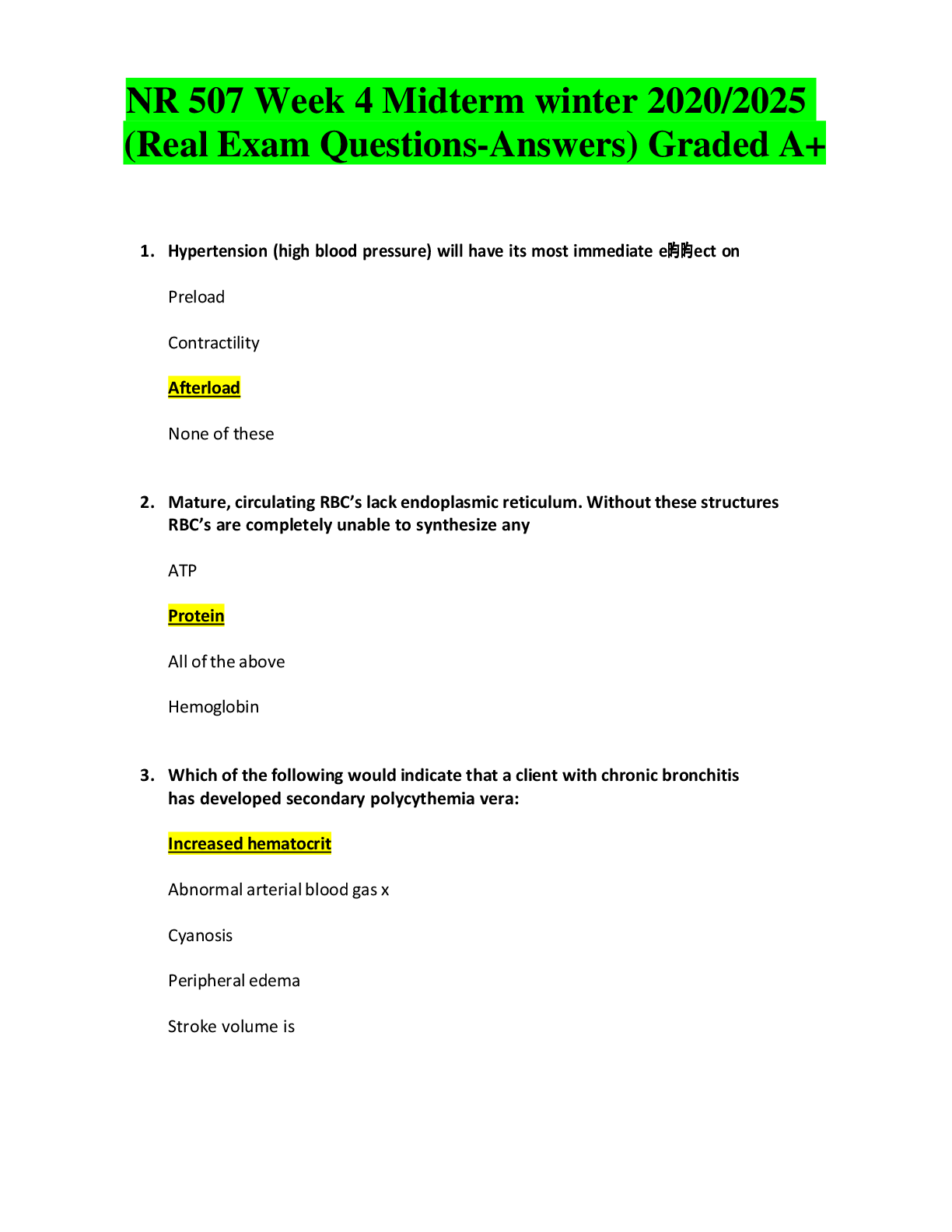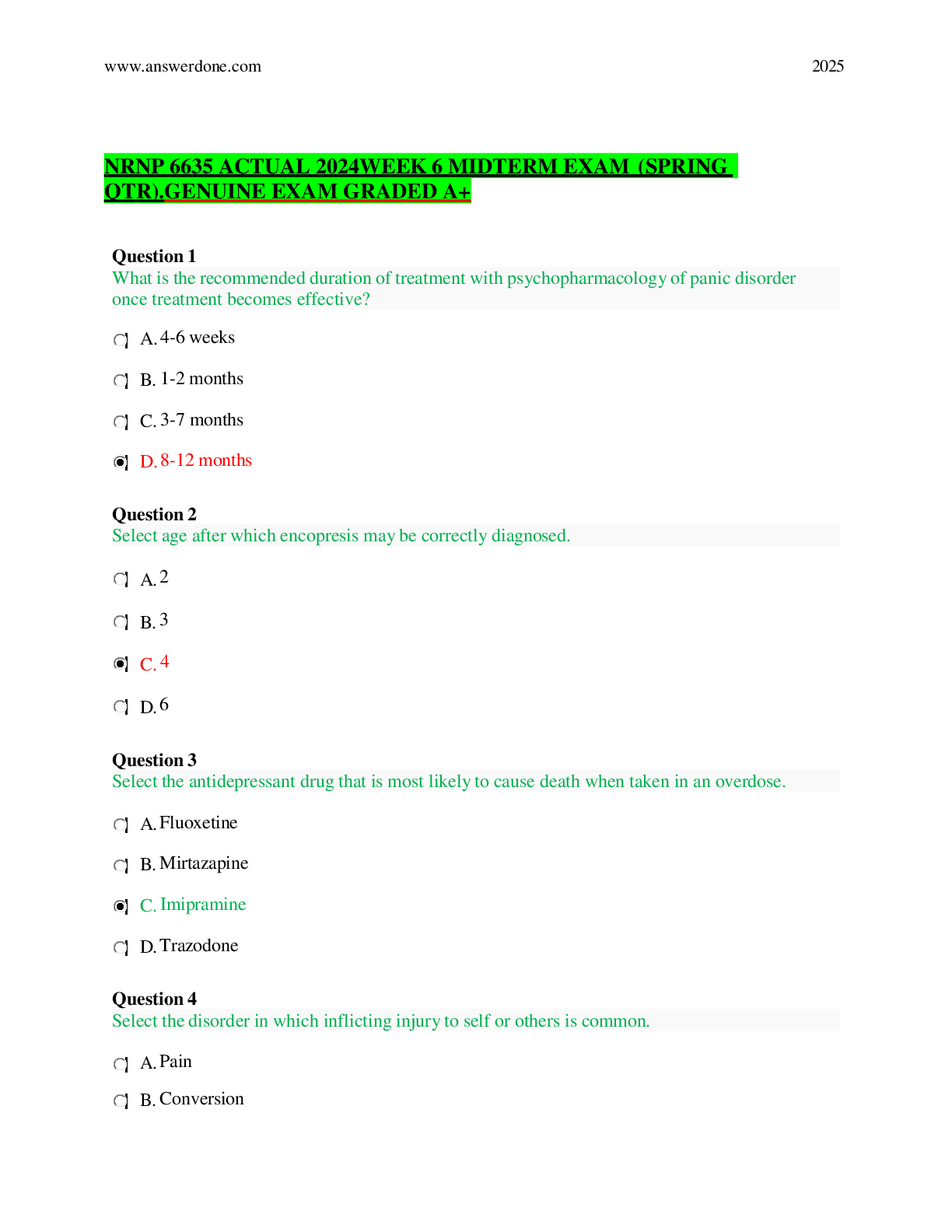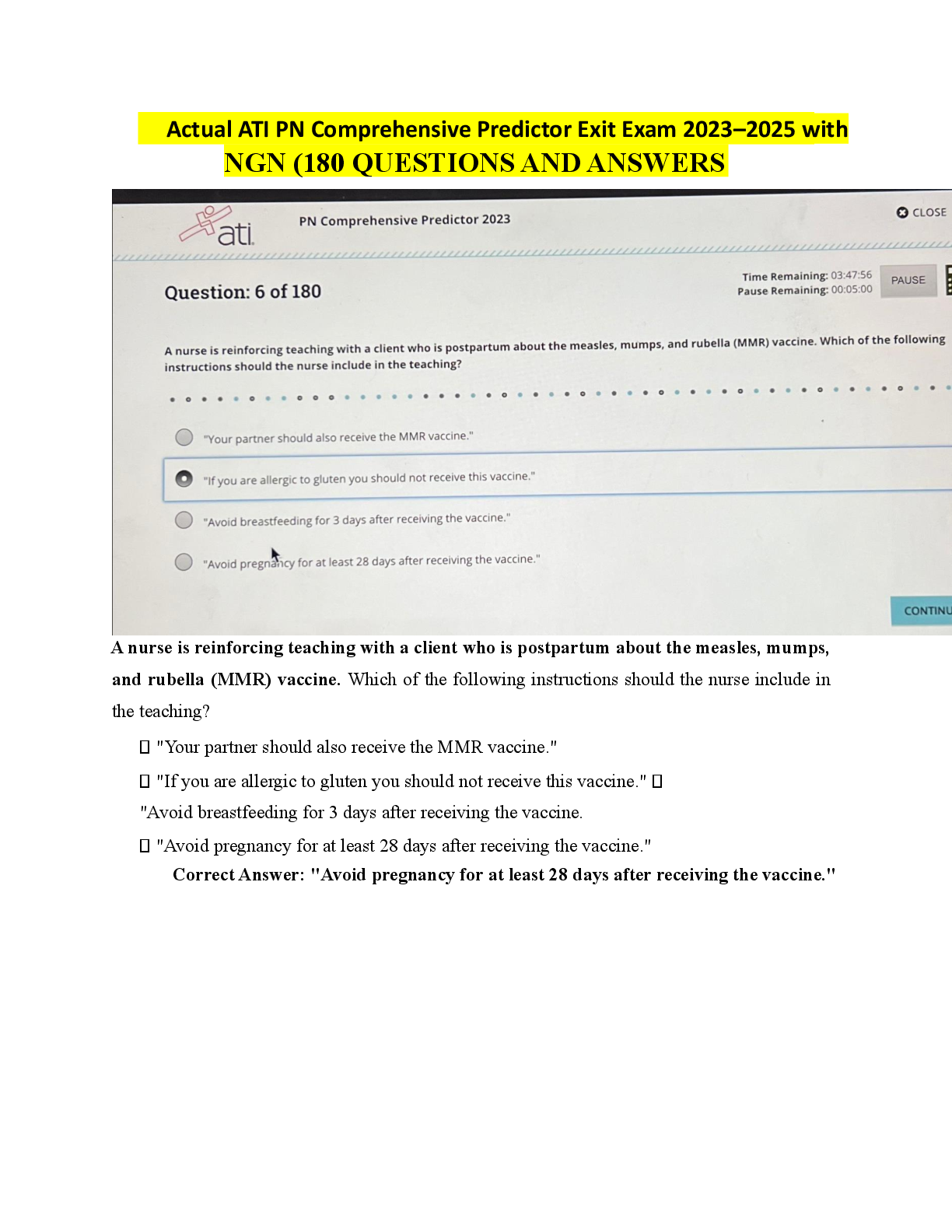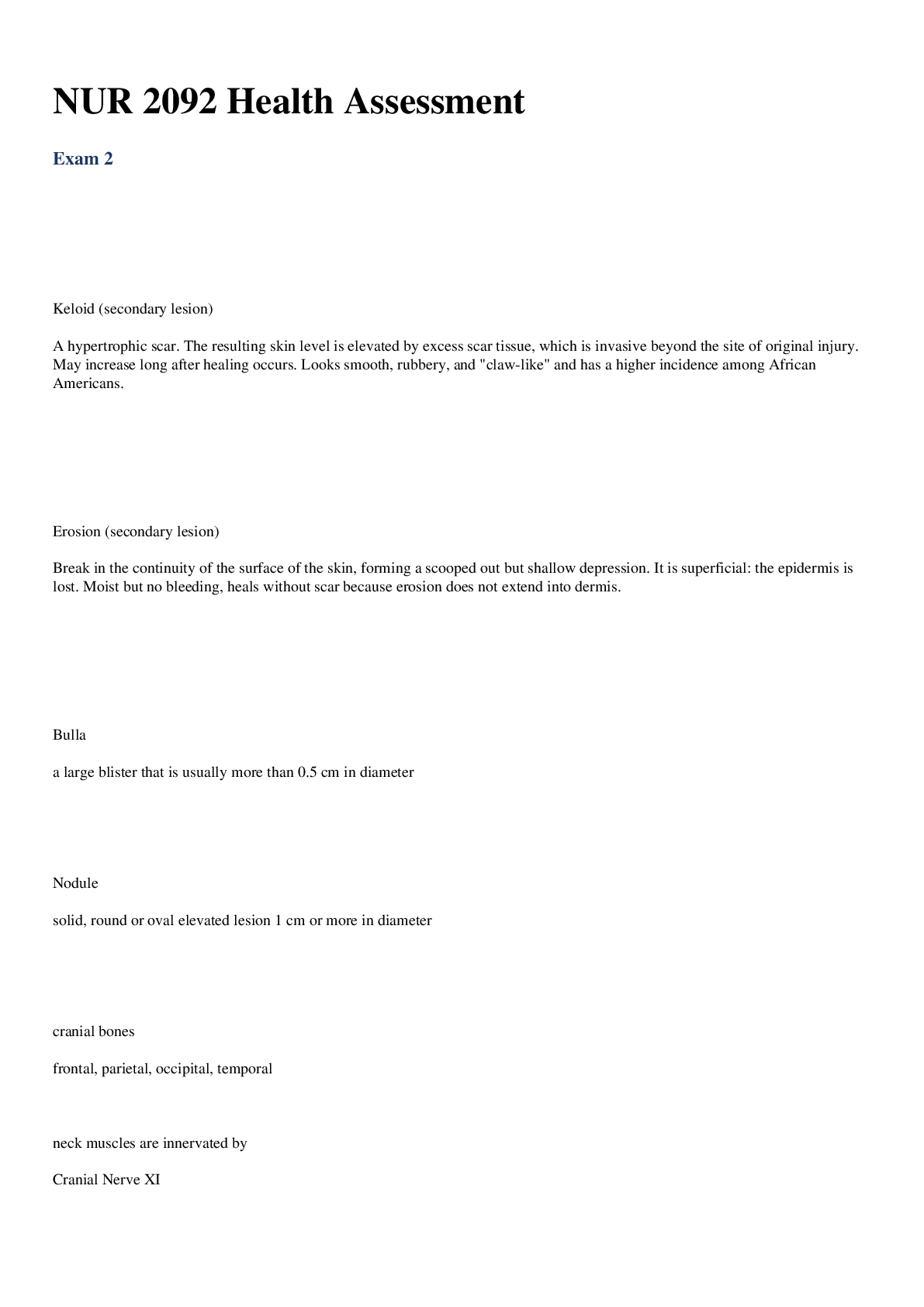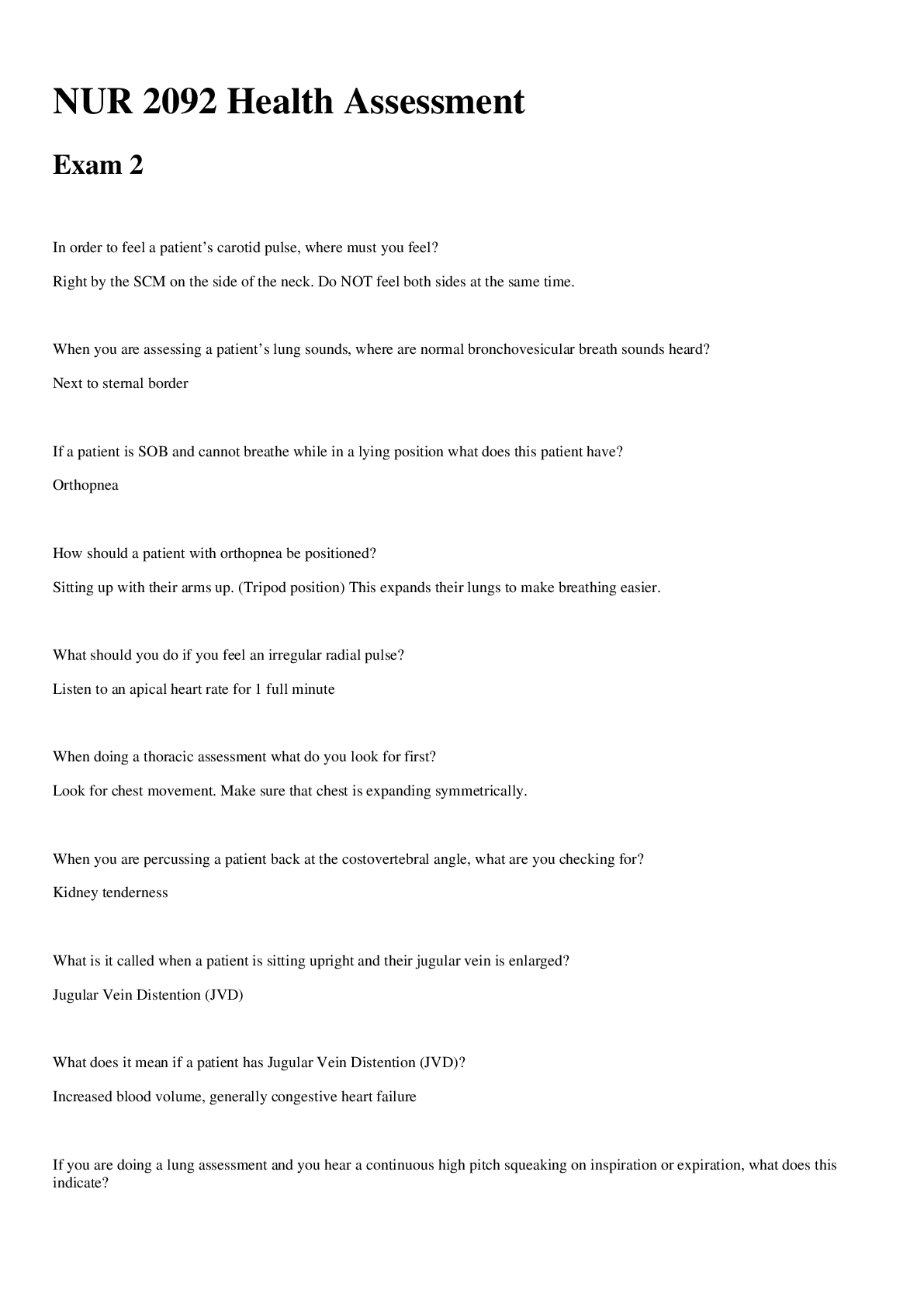PARAMEDIC FINAL EXAM Questions and Answers
Document Content and Description Below
A protocol that is a written document signed by the EMS system's medical director that outlines specific directions, permissions, and sometimes prohibitions regarding patient care that is rendered pri
...
or to contacting medical control. - ANSWER Standing order
If a paramedic transports a patient without the patient's consent or uses restraints in a wrongful manner - ANSWER False Imprisonment
A treatment plan developed for a specific illness or injury. - ANSWER Protocol
If you must deviate from your protocols because of unusual circumstances, you should FIRST: - ANSWER Notify Medical Control
HIPPA mandates that: - ANSWER Patient information shall not be shared with entities or persons not involved in the care of the patient.
HIPPA Defined: - ANSWER a. The first standards established to protect the confidentiality of a patient's health information.
b. Medical information can be disclosed only if it is necessary for a patient's treatment or for payment.
c. Special situations such as dog bites, gunshot wounds, and abuse require the release of patient information without the patient's consent.
According to HIPAA, it is acceptable and permissible for hospitals to: - ANSWER share information with the EMS providers about patient outcome for purposes of quality assurance and education.
Wheezing that is resolved with administration of bronchodilator medication was probably caused by? - ANSWER constriction of smooth muscles
Wheezing is resolved with medications that? - ANSWER Relax the smooth muscle of the bronchiole
Difficulty with exhalation is MOST characteristic of: - ANSWER obstructive lung disease
COPD: Emphysema: - ANSWER Characterized by distention of the alveoli and destructive changes in the lungs.
COPD: Chronic Bronchitis: - ANSWER Defined as sputum production most days of month for 3 or more months out of year for more than 2 years. Will rarely have normal oxygen saturation; (maybe less than 90%). May have another condition, including respiratory conditions
A 66-year-old man with chronic bronchitis presents with severe respiratory distress. The patient's wife tells you that he takes medications for high blood pressure and bronchitis, is on home oxygen therapy, and has recently been taking an over-the-counter antitussive. She further tells you that he has not been compliant with his oxygen therapy. Auscultation of his lungs reveals diffuse rhonchi. What is the MOST likely cause of this patient's respiratory distress? - ANSWER Recent antitussive use
A 76-year-old woman with emphysema presents with respiratory distress that has worsened progressively over the past 2 days. She is breathing through pursed lips and has a prolonged expiratory phase and an oxygen saturation of 76%. She is on home oxygen at 2 L/min. Your initial action should be to? - ANSWER place her in a position that facilitates breathing.
Common clinical findings in patients with obstructive lung disease include all of the following, EXCEPT: - ANSWER a decreased expiratory phase
Chronic obstructive pulmonary disease (COPD) is characterized by: - ANSWER changes in pulmonary structure and function that are progressive and irreversible
The hypoxic drive is a phenomenon in which - ANSWER bicarbonate ions migrate into the cerebrospinal fluid of a chronically hypoventilating patient, making the brain think that acid and base are in balance
Pulmonary Embolism Characteristics - ANSWER Sudden dyspnea & cyanosis, and perhaps, a sharp pain in the chest. A hallmark of pulmonary embolism is that the cyanosis does not resolve with oxygen therapy.
You are dispatched to a residence for a young woman with difficulty breathing. When you arrive, you find the patient sitting in a tripod position, noticeably dyspneic and tachypneic. She tells you that she experienced a sudden sharp pain to the left side of her chest and then started having trouble breathing. She denies any past medical history and states that she only takes birth control pills. Based on this patient's clinical presentation, you should be MOST suspicious for: - ANSWER acute pulmonary embolism
One of the hallmarks of a pulmonary embolism is: - ANSWER cyanosis that does not resolve with oxygen therapy.
Paradoxial Respiratory Movement is - ANSWER the inward movement of a segment of the chest during inhalation and a outward movement of the chest during exhalation, opposite normal chest movement and a indication of flail chest.
Paradoxical respiratory movement is characterized by: - ANSWER the epigastrium and thorax moving in opposite directions
Cor pulmonale is defined as: - ANSWER right heart failure secondary to chronic lung disease
Right Side Heart Failure Characteristics: . - ANSWER (pg. 1020)-Distention with external jugular veins, Serum forced out producing edema (feet and/or lower back), right upper quadrant swelling (hepatomegaly, eg. Liver), abdominal distention, (eg, Ascites),end enspiratory crackles, a progressive increase in dyspnea over several days, greater than usual fluid intake, and improper use of diuretics
An elderly woman with COPD presents with peripheral edema. The patient is conscious but agitated. She is breathing with slight difficulty but has adequate tidal volume. During your assessment, you note that her jugular veins engorge when you apply pressure to her right upper abdominal quadrant. She tells you that she takes a "water pill" and Vasotec for high blood pressure. You should: - ANSWER suspect acute right heart failure and administer oxygen.
Hepatomegaly and jugular venous distention are MOST suggestive of: - ANSWER right heart failure
The movement of a solute from an area of higher concentration to an area of lower concentration is called: - ANSWER diffusion
Osmosis occurs when: - ANSWER water moves from an area of lower solute concentration to an area of higher solute concentration.
What is filtration? . - ANSWER Filtration is a process within the body, similar to osmosis that is used to redistribute water and other particles. High pressure to low pressure
Any cell that ingests microorganisms or other cells is called a: - ANSWER phagocyte
Phagocytosis is the process by which: - ANSWER monocytes digest microbes
Group of cells make up _______________? - ANSWER Tissues
Which of the following structures comprise different types of tissues that work together to perform a particular function? - ANSWER Organs
The middle muscular layer of the heart is called the: - ANSWER myocardium
Which layer of the heart would be penetrated during an emergent medical procedure in order to remove fluid? - ANSWER Pericardium
The thick fibrous membrane that surrounds the heart is called the: - ANSWER pericardium
The most inferior portion of the heart is called the: - ANSWER apex
3 layers of the Heart wall - ANSWER inner-indocardium
mid-myocardium
out-pericardium
The __________ represents the end of ventricular depolarization and the beginning of repolarization. - ANSWER J point
The Q-T interval would MOST likely be prolonged in patients: - ANSWER Who are hypocalcemia
The atrioventricular valves of the heart include the: - ANSWER tricuspid and mitral
What prevents the backflow of blood during ventricular contraction? - ANSWER Atrioventricular valve
Cardiac output is dependent upon: - ANSWER stroke volume and heart rate.
know about cardiac out put: - ANSWER the amount of blood pumped out by either ventricle, normal 5-6 L/M
Changes in cardiac contractility may be induced by medications that have a positive or negative ___ effect. - ANSWER Inotropic
The Mitral Valve is: - ANSWER (left) is located on the higher-pressure side of the heart.
Atrial Kick is most accurately defined as: - ANSWER 20% of ventricular filling caused by atrial contraction.
A wide QRS complex that is preceded by a normal P wave indicates: - ANSWER an abnormality in ventricular conduction.
The inferior wall of the left ventricle is supplied by the: - ANSWER right coronary artery
The right atrium, right ventricles, and part of the left ventricle are supplied by: - ANSWER the Right coronary artery
If the R-R interval spans more than ____ large boxes on the ECG graph paper, the rate is less than 60 beats/min. - ANSWER 5
Unlike the parasympathetic nervous system, the sympathetic nervous system: - ANSWER provides a mechanism for the body to adapt to changing demands.
Under normal conditions, the strength of the cardiac contraction is regulated by: - ANSWER The nervous system
The circumflex branch of the left coronary artery supplies the _________ wall of the left ventricle. - ANSWER Lateral
The Left main coronary artery branches into: - ANSWER The circumflex and the left anterior descending arteries
The left main coronary artery subdivides into the: - ANSWER Left anterior descending and circumflex arteries
In contrast to arteries, veins: - ANSWER are more likely to distend when exposed to backpressure.
How many large boxes on the ECG graph paper represent 6-seconds: - ANSWER 30
Chronotropic effect : - ANSWER Influences heart rate. For example, a drug with a positive chronotropic effect would speed up the heart rate
Administering a drug that possesses a positive chronotropic effect will have direct effect on: - ANSWER The heart rate
A medication that possesses a negative chronotropic effect will: - ANSWER Cause a decrease in the heart rate
In contrast to the right side of the heart, the left side of the heart: - ANSWER Drives blood out of the heart against the relatively high resistance of the systemic circulation
Once an advanced airway device has been inserted into a cardiac arrest patient: - ANSWER ventilations are delivered at a rate of 8 to 10 breaths/min.
The appropriate dosing regimen for epinephrine in cardiac arrest is: - ANSWER 1 mg of a 1:10,000 solution every 3 to 5 minutes.
You have restored spontaneous circulation in a 54-year-old man who was in ve
[Show More]
Last updated: 3 years ago
Preview 1 out of 13 pages

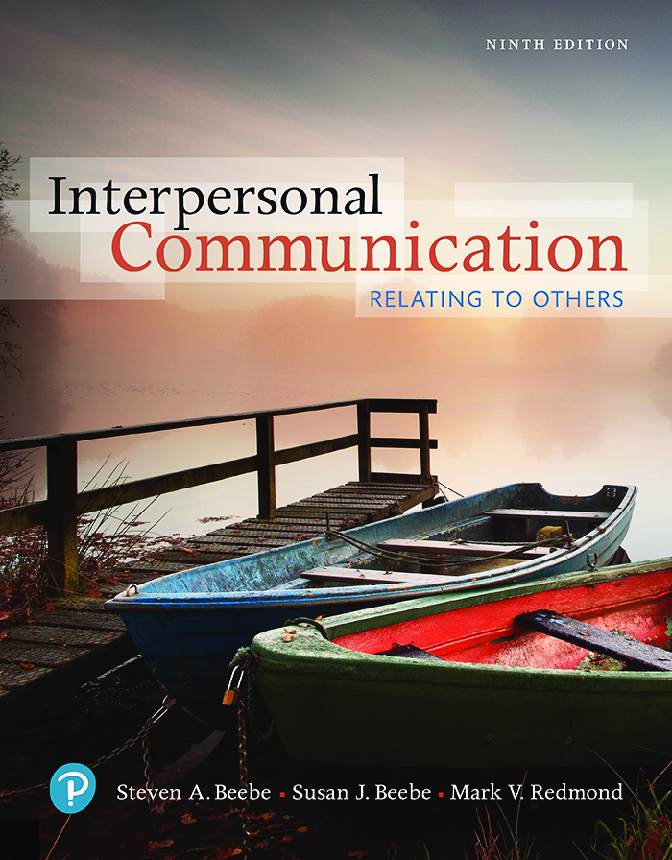
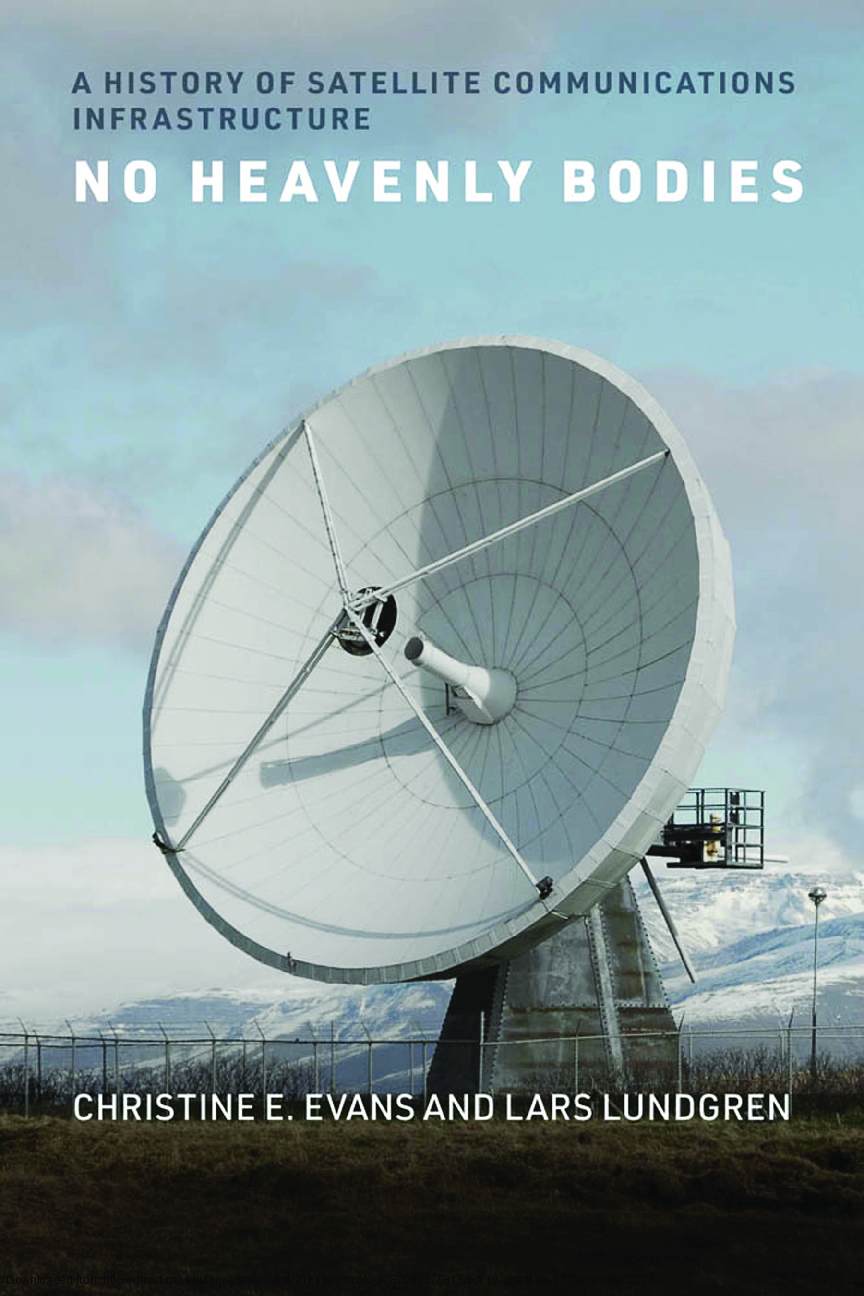
.png)
